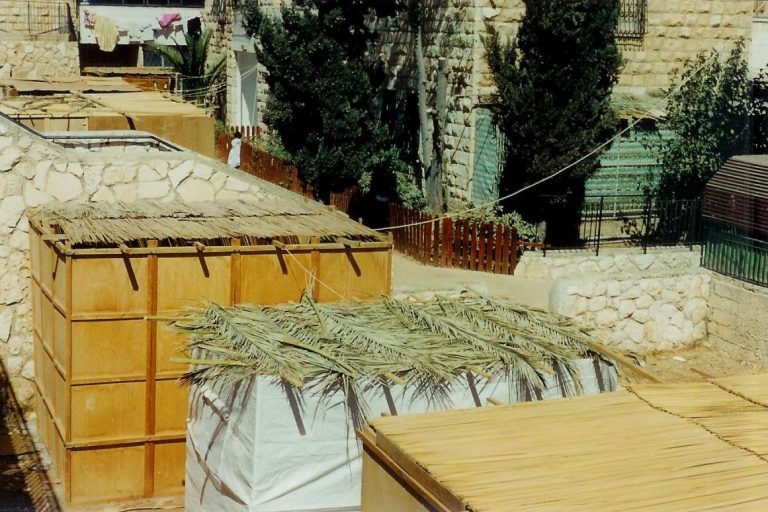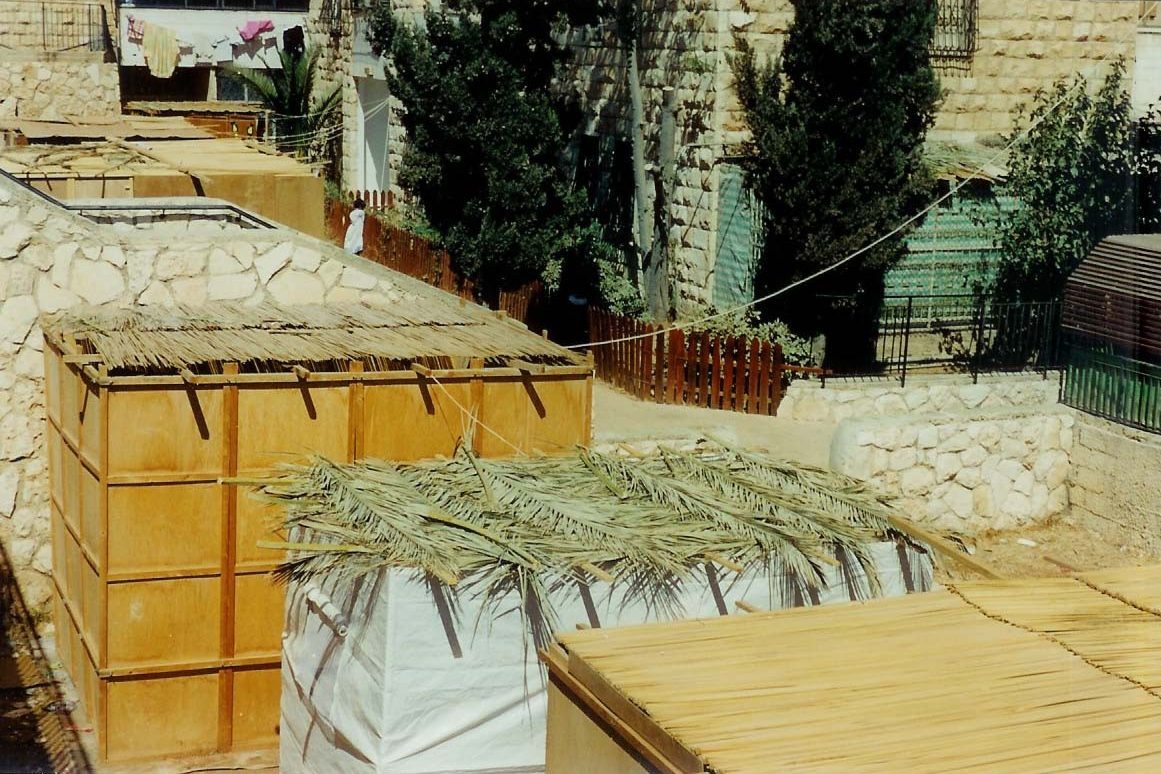 Of What Materials May it be Made?
Of What Materials May it be Made?
The “Sechach” must be made from some product of the earth, that is no longer attached to the earth. Therefore, wood of all kinds, including bamboo poles, leafy branches, branches of pine trees (very aromatic, but pine needles tend to wind up in one’s soup), are all good.
However, the actual branches and leaves of a living tree, still attached to the ground, are not acceptable. It might be interesting as a “tree house,” but it doesn’t make it as a Sukkah.
“Sechach” cannot be made from utensils; even wooden utensils, such as spoons and forks.
Metal and plastic and glass, in any form, utensil or not, are invalid as “sechach.” Thus, strips of aluminum foil, thin stained glass rods, and plastic straws or mats, are all no-no’s.
Maximum and Minimum Heights
An “amah” is a length somewhere between eighteen inches and two feet. The maximum height of a Sukkah; that is, of its “Sechach” above the floor, is twenty “amot;” that is, a height somewhere between thirty and forty feet. (Mishnah 1 in Chapter 1 of Masechet Sukkah)
The minimum height of a Sukkah is ten “tefachim,” where the “tefach,” derived from a measure of the fist, is between 8 and 9.6 centimeters, or about 3.2 – 3.8 inches. The height is therefore between 32 and 38 inches, approximately, one yard, or meter. (Sukkah 1:1)
How Thick? Lets Light Pass? Blocks Light?
The thickness of the “Sechach” must be such that in the daytime it provides more shade than it allows sunlight to pass through.
On the other hand, it cannot be so thick that it would completely obscure the brightest stars at night.
“Active” and “Passive” Covering
There is a verse in the Torah from which is derived the requirement that the “Sechach” should be applied “actively” and not “passively.” This principle is called “Ta’Aseh v’lo Min he’Asuy.” Using other words, positive, intentional action on the part of the one who lays the “Sechach” is required, rather than the passive allowing of the arrival of the “Sechach” to occur.
This principle, the requirement of positive action, rather than passive involvement, has application in various areas of the Torah. Here, we will suffice with two examples of its application in the World of the “Sukkah:”
- One who hollows out space within a large haystack, hoping to use the hay on top of the space as “Sechach,” has not succeeded in creating a valid Sukkah, because that hay was not placed there for the purpose of “Sechach,” but for some other hay-related purpose. (Of course, this is not to imply that hay is not valid as “Sechach” (watch that double negative!); it certainly is valid “Sechach” when it is placed properly.)
- One may not use bundles of hay or some other valid “Sechach”-material as “Sechach.” You ask, “Why not?” The answer given by the Talmud, perhaps somewhat more relevant in those times, or perhaps in the modern State of Israel, where there are many Jewish farmers, is that sometimes a farmer will put a bundle of hay on top of the Sukkah for the sole purpose of drying it in preparation for some purpose unrelated to “Sechach.” Only afterwards will he decide to use those bundles as “Sechach!” But we would then be caught again in the trap of passive placement rather that active covering!
And because of that fear of someone initially putting up bundles to dry, and later deciding to use them as “Sechach,” the Sages also said that even if the builder of the Sukkah wanted from the beginning to use the bundles as “Sechach,” he is not permitted to do so.

